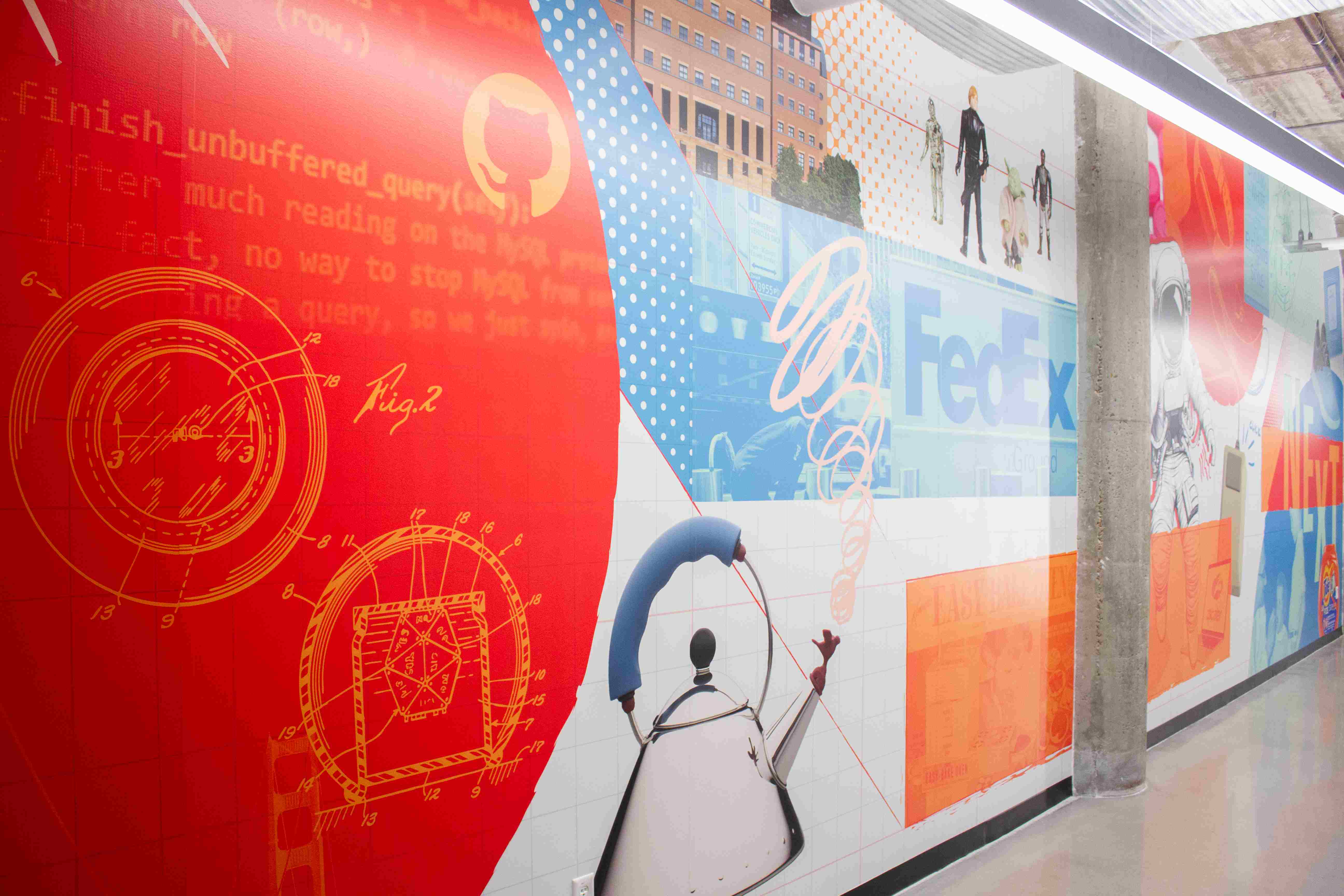Flowery. You hate to hear it. In brand strategy, it’s the F word. It’s never said with anything but condescension. For example, “Give it some flowery language.”
Could that mean “use the craft of thoughtful and elegant phrasing to elevate my position”?
Yes.
Does it?
Never. Not once. Not even for a second.
The F word shows up when branding is reduced to a shallow exercise.
We’ve all seen communication that isn't matched in execution. Organizations stylize an unearned sentiment or contrived mystique to appeal to broad-stroke trends. They appropriate a feeling so divorced from the business that it could register as a psychotropic. This leads to only two things: damaging gaffes and cynical consumers. Flowers bloom, and then they rot.
Yes, you need sharp language and a strong visual identity. But if the strategy stops there, particularly with AI platforms turning brand assets into black-and-white summaries, it dies there too.
At Hyperquake, we want our clients’ brands to show up in every layer of their business. We work with everyone from Fortune 50s to year-one startups, and contrary to the outliers who request flowery language, most companies don’t welcome cynicism. They believe in their value, and that people should have it.
Do they want that value to be profitable? Of course. Consumers understand that—they make a living too. What they loathe is when you insult that understanding, wrapping your brand in idealism while your behavior betrays it. Put simply: people like the truth.
Purpose-led branding humanized commerce in ways that brought enormous value to customer experiences. But many took the wrong lessons to heart—or rather, to their pockets. They mimed the movement without discipline, shaping themselves to whatever virtue was having its moment. In trying to be more human, they became less believable.
When you dismiss the work to align the brand with how the business actually runs, you pander to ubiquitous insights—ones that fit because they fit anywhere. This breeds homogeny, and whether intended or not, it insults your audience. People would rather be looked at transactionally than cynically.
This baggage is now colliding with generative AI. Consumers are able to pull reviews, product comparisons, and sentiment in one prompt without ever needing to engage in your content. Getting someone to recognize your value is getting harder by the processing unit. Is this threatening or energizing? It’s what we make of it. Brand is a creative enterprise.
A brand’s equity has never belonged to the tools that communicate it. Trust shifts. Rules change. Monolithic solutions don’t age well. The game is too dynamic to rely on plays everyone can access. Winners don't distinguish themselves in expression, they distinguish themselves in systems. Brand should have an impact everywhere in the value chain.
The brand team should own the challenge of keeping customers at the center of decisions made across systems, not just near the point of purchase. These teams obsess over differentiation and specialize in customer insights and raw creativity. They’re oriented to be a company’s natural creative engine and a check on value creation.
Some see brand as the result of systems—and that a brand influencing systems would be backwards. But that assumes you got it right the first time, or that systems don’t lose what makes you different or keep up with cultural shifts and consumer expectations. Most teams are consumed with running the business and can’t always stay aligned with what customers value or how they engage. But brand teams are.
They spend their days translating business realities into what your audience actually cares about. They make your value resonate through content. Why not challenge them to make it resonate everywhere?
Build what your customers care about into every system, and you'll earn brand equity more powerfully than any message or campaign ever could.
Define Your Distinct Brand Position—and Create From There
A well-crafted positioning statement built with strategic discipline, not flowery language, should ignite new ways to create value for everyone, from suppliers and employees, to partners and customers. I’m not saying it holds all the answers. I’m saying it gives you the courage to look.
Used as a creative and critical lens, the position can shape everything from culture to innovation. It’s your truth, personified. It’s felt in decisions, actions, and behaviors. That feeling shouldn’t be a byproduct. It should be an arbiter.
Feelings are often dismissed as sentimental fluff. Yet the world’s most valuable brands turn them into strategic advantages. Some call it mystique. Great brands call it mastery.
What we might call ineffable value, they recognize as deliberate choices. They look at every activity of their business and ask how it can better serve their distinct position—what people love them for. Nothing is menial. It’s the tweak of a process or an emphasis in service that yields significant value. Discretionary effort can become standardized practice.
Go Beyond Messaging to Discover Movements
As strategists, the positions we develop have to hold up across the organization. Our words must be grounded in a distinction our clients are suited to win. These statements deserve more scrutiny than audience approval. Our job is to amplify the truth for greater impact. That impact is limited if it's confined to marketing alone. Truth is pervasive. The opportunity is everywhere.
We can lay out the organization’s existing activities and ask:
Where can we make our distinct position more true?
Where are we contradicting it?
What can we make harder for competitors to imitate?
What rules are we willing to break for the customer’s benefit?
What simple act could we make unmistakably ours?
These questions don’t need profound (read: expensive) answers. A little creativity in making moments even slightly more aligned to an ownable position can set off a domino effect.

Nordstrom: The Tire Story That Still Rolls
Take the legendary Nordstrom return story. A customer returned tires Nordstrom never sold, and the employee took them back, issuing an approximate refund without hesitation. No script, no divine intervention—it was their service ethos, lived out in a single interaction.
The brand’s distinct position empowers employees to make service their instinct, not their job. It’s a classic example of how a moment can build enduring equity.
Costco: The Loyalty System Sells Itself
It’s a peculiar kind of trust when a brand can charge you just to enter their building. And yet, Costco’s membership renewal rate is north of 90%. That loyalty isn’t just a metric, it’s the mechanism that keeps their promise: high-quality goods and services at low prices.
Most retailers said you can stand for quality or for low prices, you can’t do both. Costco argues that’s not a retail adage, it’s a margin adage. Their membership model flips the script, generating profit from access rather than markup. That freedom lets them cap margins, focus on volume efficiency that keeps prices low, maintain consistent worker pay and expectations, and ultimately earn trust on their own terms. To pull this off, they had to build around customer loyalty, not product sales. All of their systems are organized around this distinction.
They stock around 4,000 SKUs chosen on quality and their ability to turn quickly. This is about a tenth of what a traditional supermarket carries, allowing them to buy in bulk, negotiate better supplier terms, and pass savings on to members. Their warehouse layout merges storage and shopping space to cut overhead, and their assortment of rotating and select items keeps people coming in—one loyal customer and $1.50 hot dog at a time.
Costco’s brand doesn’t live in ads. It lives in math, efficiency, and restraint. Every system reinforces the same promise: provide members with quality goods and services at the lowest possible price.
Believe Your Brand Position Can Drive Experiences & Innovation
Brand is an asset of value creation. Ask it to be its engine too. Those who are responsible for expressing value are in a position to build it. If that perspective is separated from systems and activities, the story gets shallow—and dressed in flowery language.
That’s when cynicism shows up. Truth is harder and more complicated, but it builds things. It’s what people want. And it’s where the work of a brand belongs.

.gif)





.jpg)